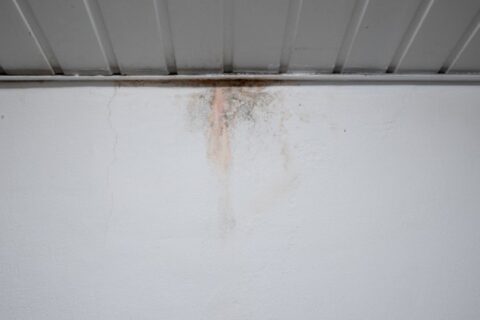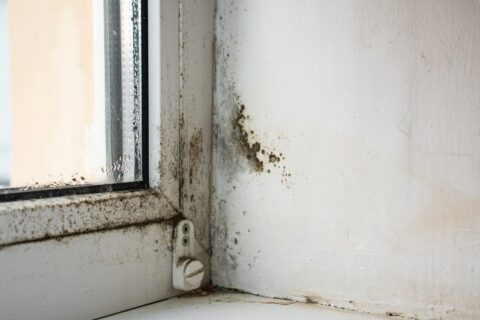The Mysterious White Stuff: What Is Efflorescence?
What Is Efflorescence?
Do you see a white, powdery substance on your basement walls, brick, or concrete surfaces? It’s probably efflorescence. This crusty deposit is a buildup of salts brought to the surface when moisture evaporates from materials like brick or concrete. Although harmless at first, it may be a warning sign of underlying moisture issues. Learn what causes efflorescence, how to spot it, and most importantly, how to prevent and remove it.
What Causes Efflorescence?
Efflorescence occurs when water moves through a porous material, dissolving the salts within. When the water reaches the surface and evaporates, it leaves those salts behind, creating a chalky, white deposit. Moisture and soluble salts must both be present for efflorescence to appear.
Common sources of moisture include rain, rising groundwater, and high humidity. Improper drainage and poor ventilation also contribute to the issue. This means that while efflorescence is often worse in the winter due to snow or rain, it can occur in any season.
Is Efflorescence Harmful?
Efflorescence itself isn’t dangerous—it’s not toxic and doesn’t damage materials immediately. However, the moisture behind them can cause real trouble. Constant exposure to moisture weakens concrete, brick, and mortar. Bigger issues like mold growth or structural damage may occur if water is permitted to continually penetrate these building surfaces.
What is Efflorescence in Concrete?
Because concrete is highly porous, it’s especially vulnerable to efflorescence. This is true whether you’re dealing with a basement floor, driveway, or poured concrete wall. Addressing moisture issues quickly keeps your concrete in good condition.
Efflorescence is easy to spot on concrete. Look for a white or grayish powder forming on the surface, particularly in areas that tend to stay damp, like basements, garages, or outdoor walkways. This buildup is easy to confuse with mold, calcium deposits, or other stains, but a simple test can confirm it. If the powder dissolves in water, it’s efflorescence. If not, you might be dealing with a different type of buildup.
Does Efflorescence Damage Brick?
Efflorescence is common in brickwork as well, especially when the bricks are exposed to rain or excessive humidity. Brick is porous and contains salts that migrate to the surface when moisture is present. Efflorescence typically appears near joints or cracks first because that’s where moisture tends to collect.
While efflorescence on brick doesn’t immediately threaten the structure, continued moisture exposure may eventually cause spalling. This is where the brick’s surface begins to peel or flake, weakening the masonry over time.
How to Prevent Efflorescence
Preventing efflorescence requires effective moisture management. Here are some practical steps to keep it at bay:
- Improve drainage: Ensure that water flows away from your home’s foundation. Install gutters, downspouts, and proper landscaping to prevent pooling near brick or concrete structures.
- Ventilate: Increase ventilation in moisture-prone areas like your basement to reduce humidity and prevent condensation.
- Seal surfaces: Apply a quality sealer to reduce moisture absorption in areas prone to rain or high humidity.
- Use proper materials: When building or remodeling, use materials that are less prone to efflorescence. This includes using well-mixed concrete and avoiding sand or brick high in soluble salts.
- Schedule waterproofing services: Waterproof basements and crawl spaces prevent water from seeping into porous surfaces, thereby preventing efflorescence.
How to Remove Efflorescence
If you’re already dealing with efflorescence, don’t worry—it’s relatively easy to remove. Here’s what to try:
- Water and brush: In many cases, efflorescence can be removed with a stiff brush and plain water. Simply scrub the affected area and rinse.
- Vinegar solution: For more stubborn buildup, try a solution of one part vinegar to five parts water. Apply the solution, scrub with a brush, and rinse thoroughly.
- Commercial cleaners: You may need a specialized cleaner to tackle heavy or widespread buildup. Commercial efflorescence removers are formulated to dissolve salts without damaging the underlying material.
- Pressure washing: A pressure washer effectively removes efflorescence on large outdoor surfaces, though care should be taken to avoid damaging the surface.
Removing efflorescence is usually a straightforward process, but if it keeps coming back, you may need expert help addressing the underlying moisture issue.
Get Help with Your Efflorescence Problem
Everdry Waterproofing of Wisconsin has been helping Greater Milwaukee homeowners since 1989. Our patented waterproofing methods are safe, effective, and long-lasting—perfect for treating basements, crawl spaces, and other moisture-prone areas. Plus, with our lifetime transferable warranty, you have peace of mind that your investment is protected.
If you notice efflorescence in your basement, on brickwork, or on concrete surfaces, don’t wait for a bigger issue to develop. Contact us today for a free, no-obligation quote in your Southeast Wisconsin home. We’ll remove efflorescence and employ waterproofing methods to keep your home in good shape.
Ready to Get Started?
Contact Us Today to Schedule a No Pressure, No Obligation, Free Quote!


